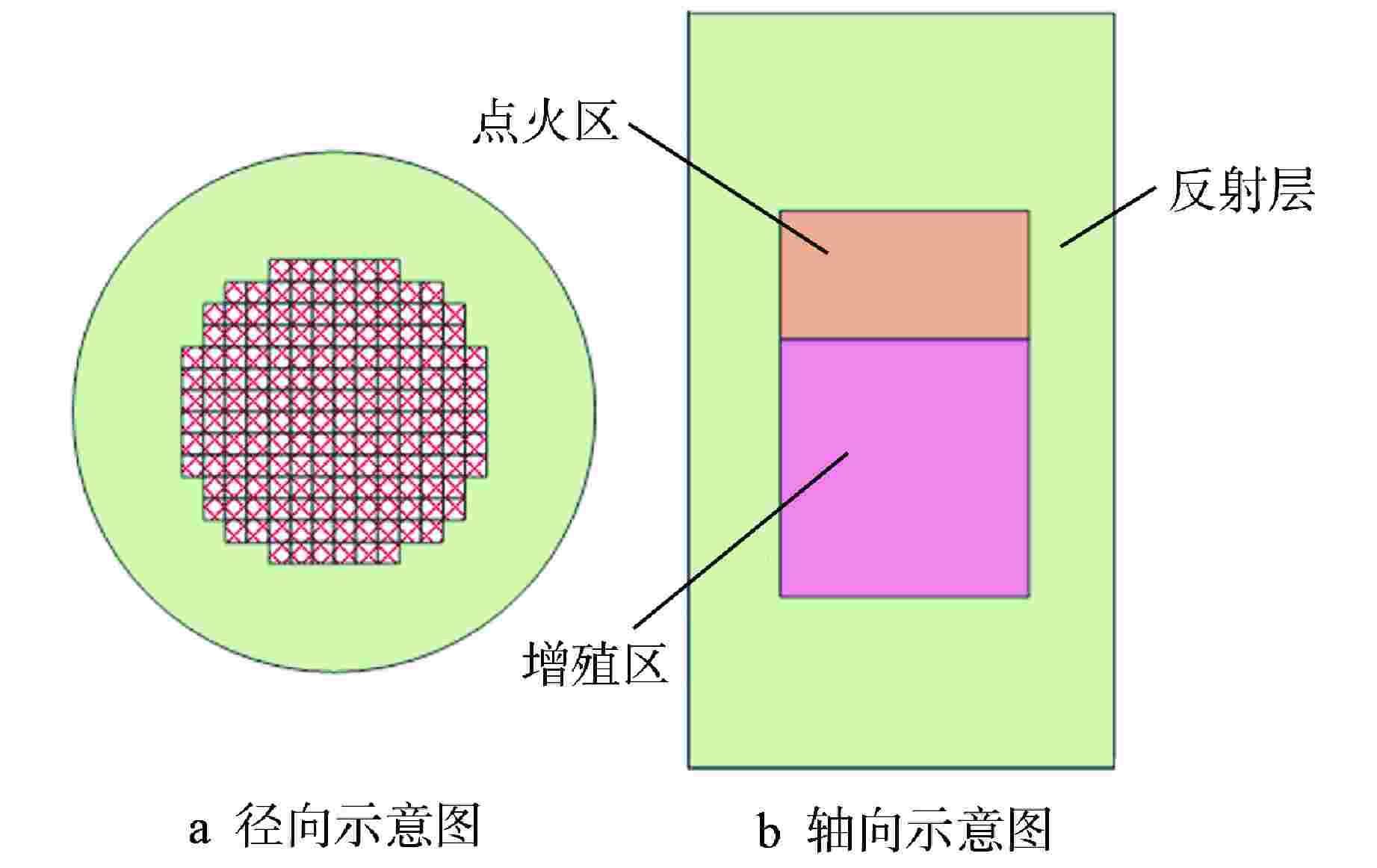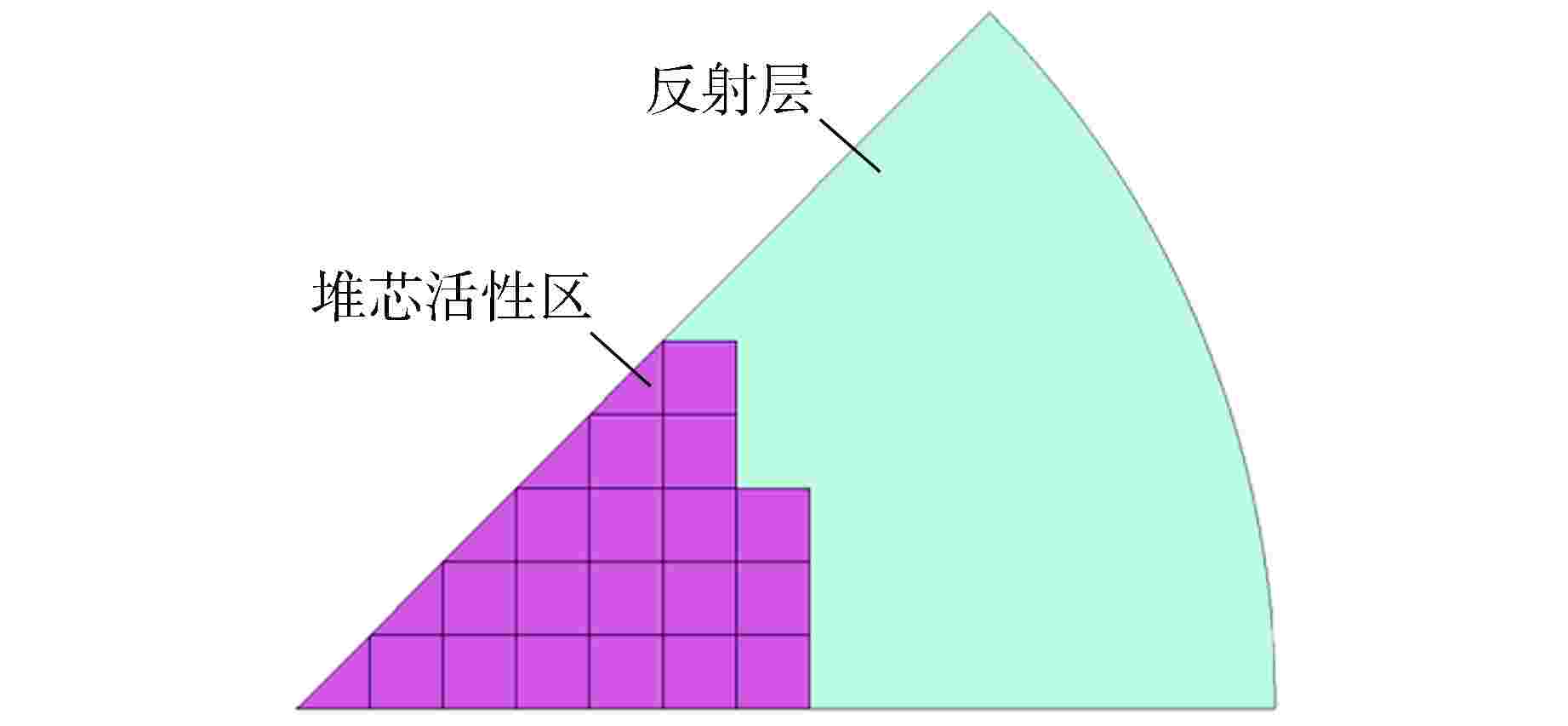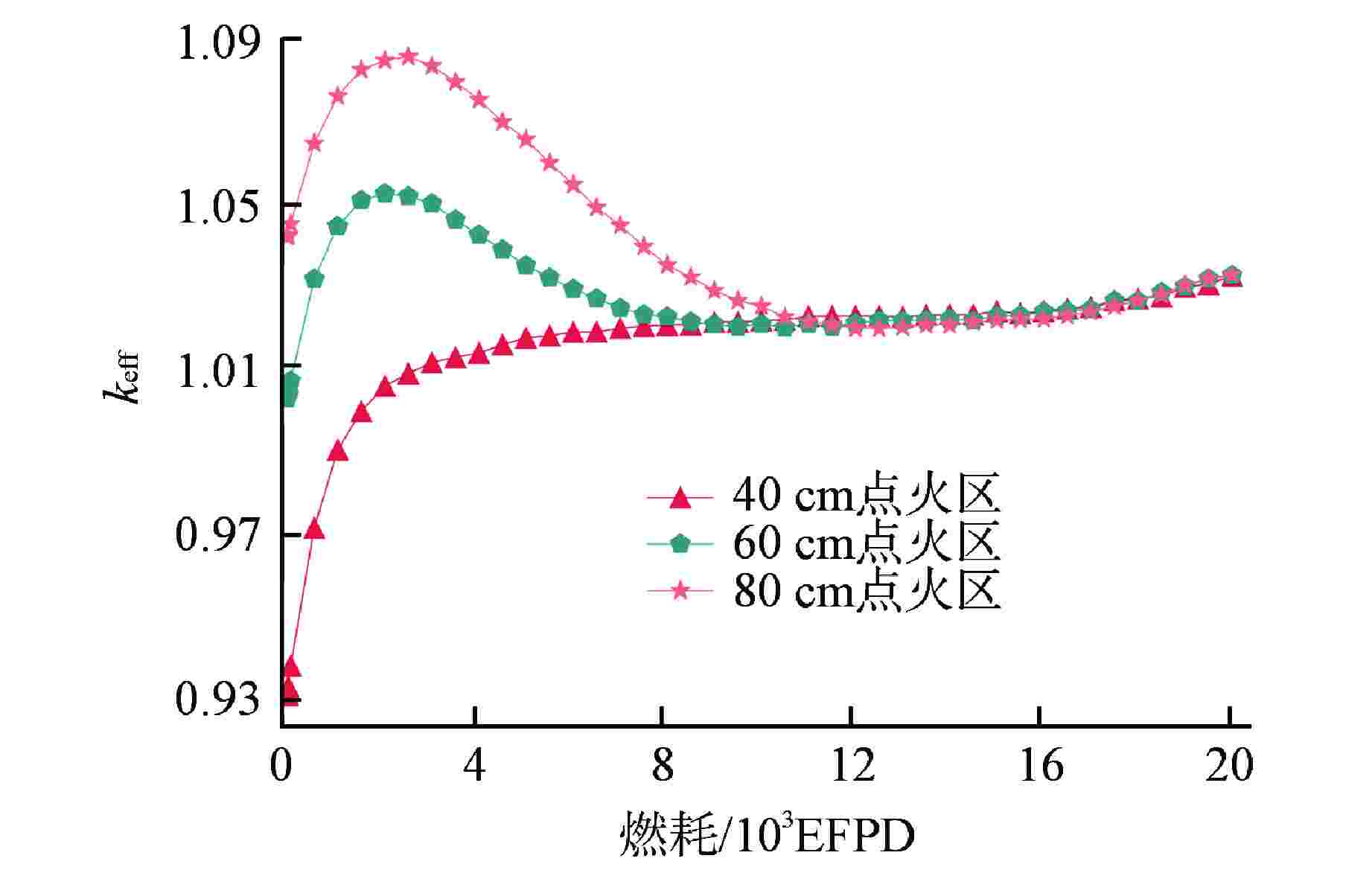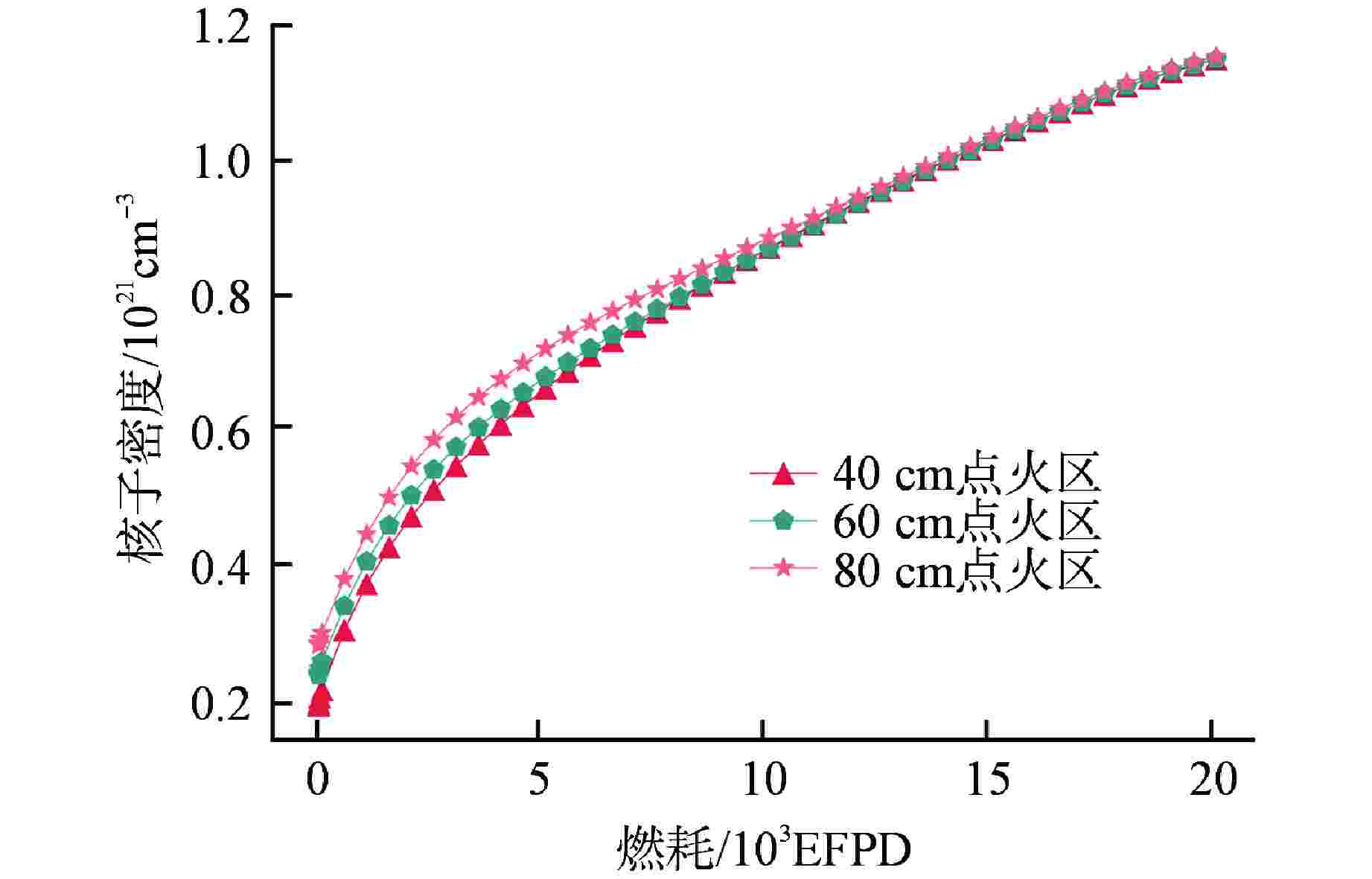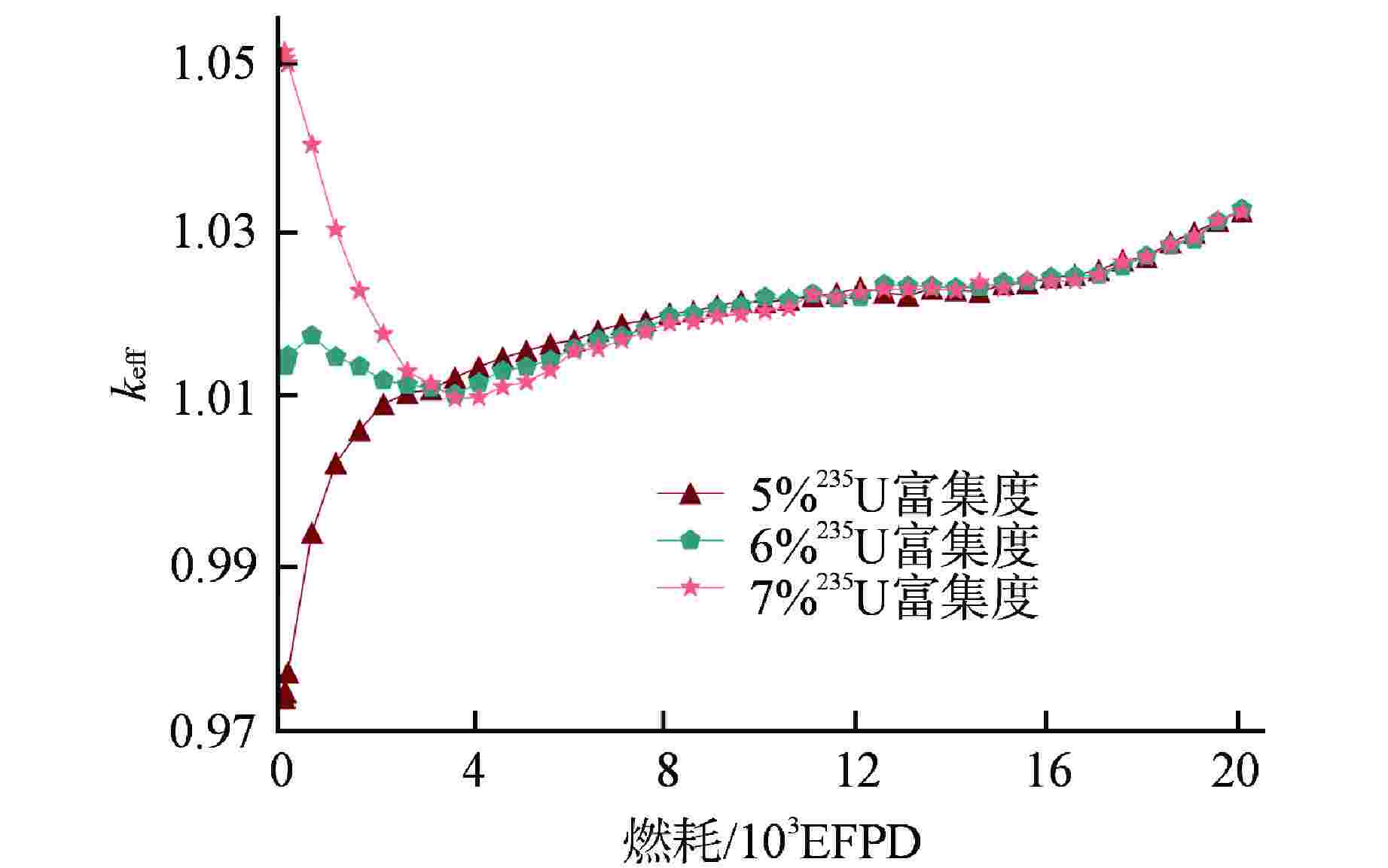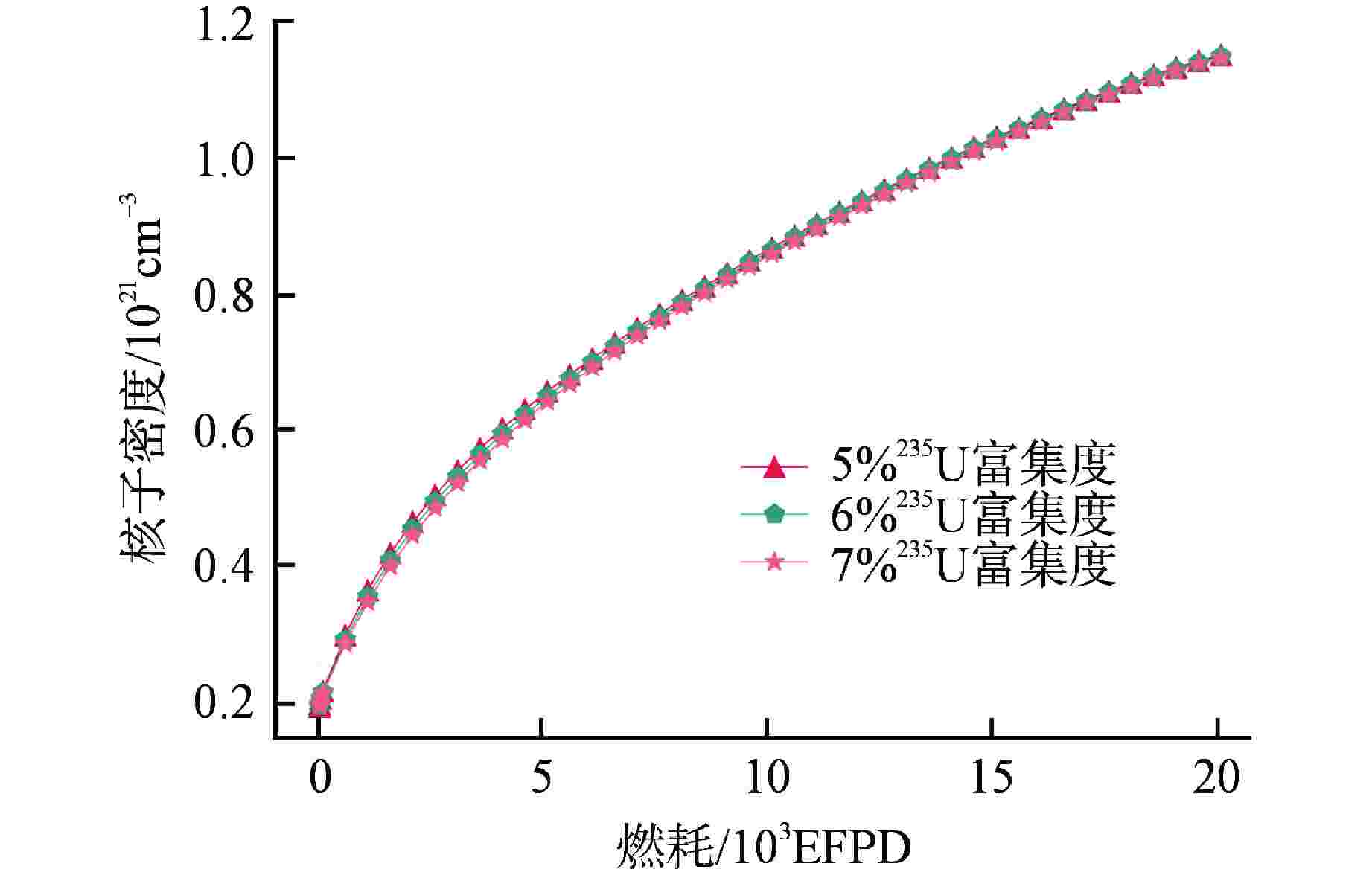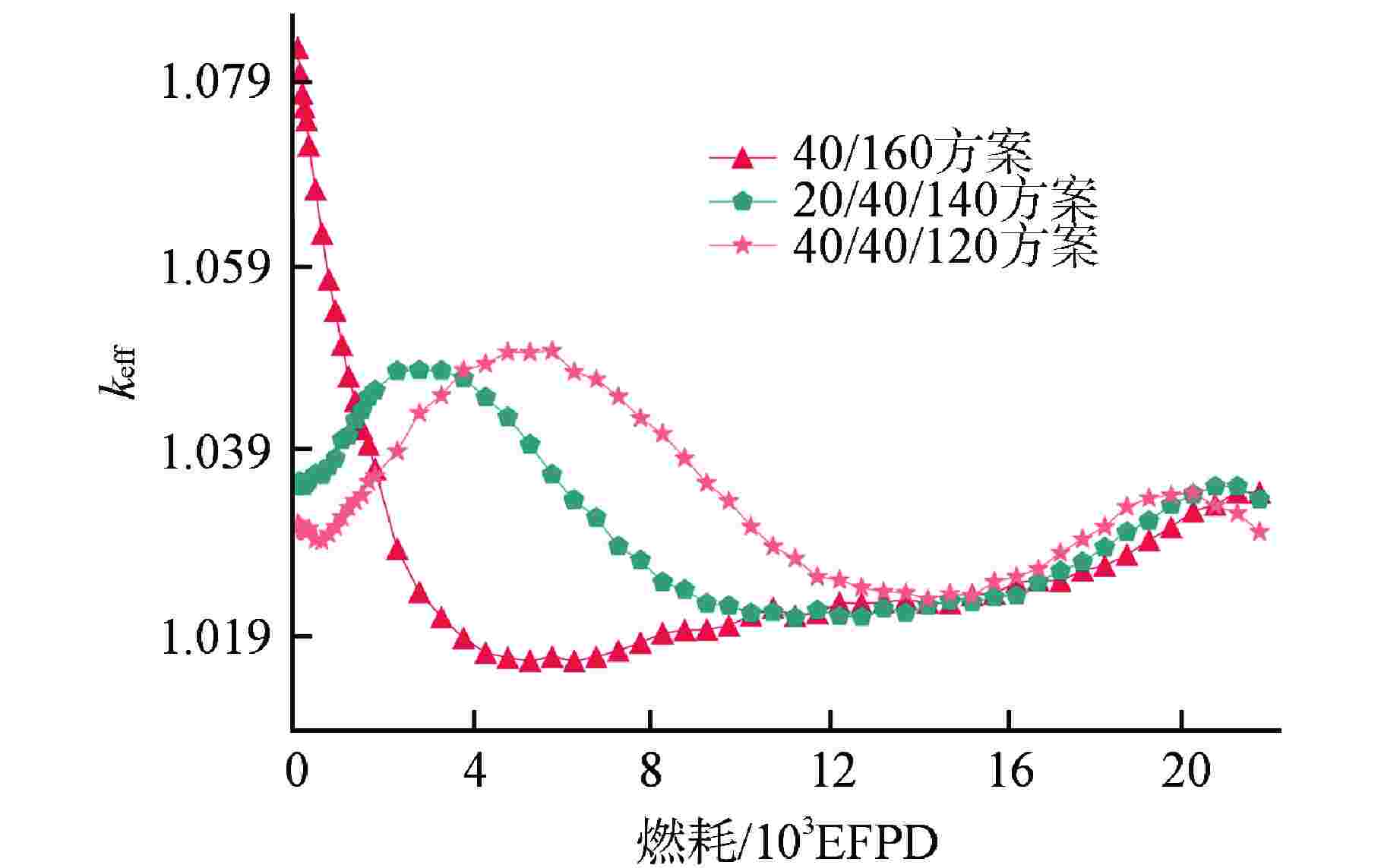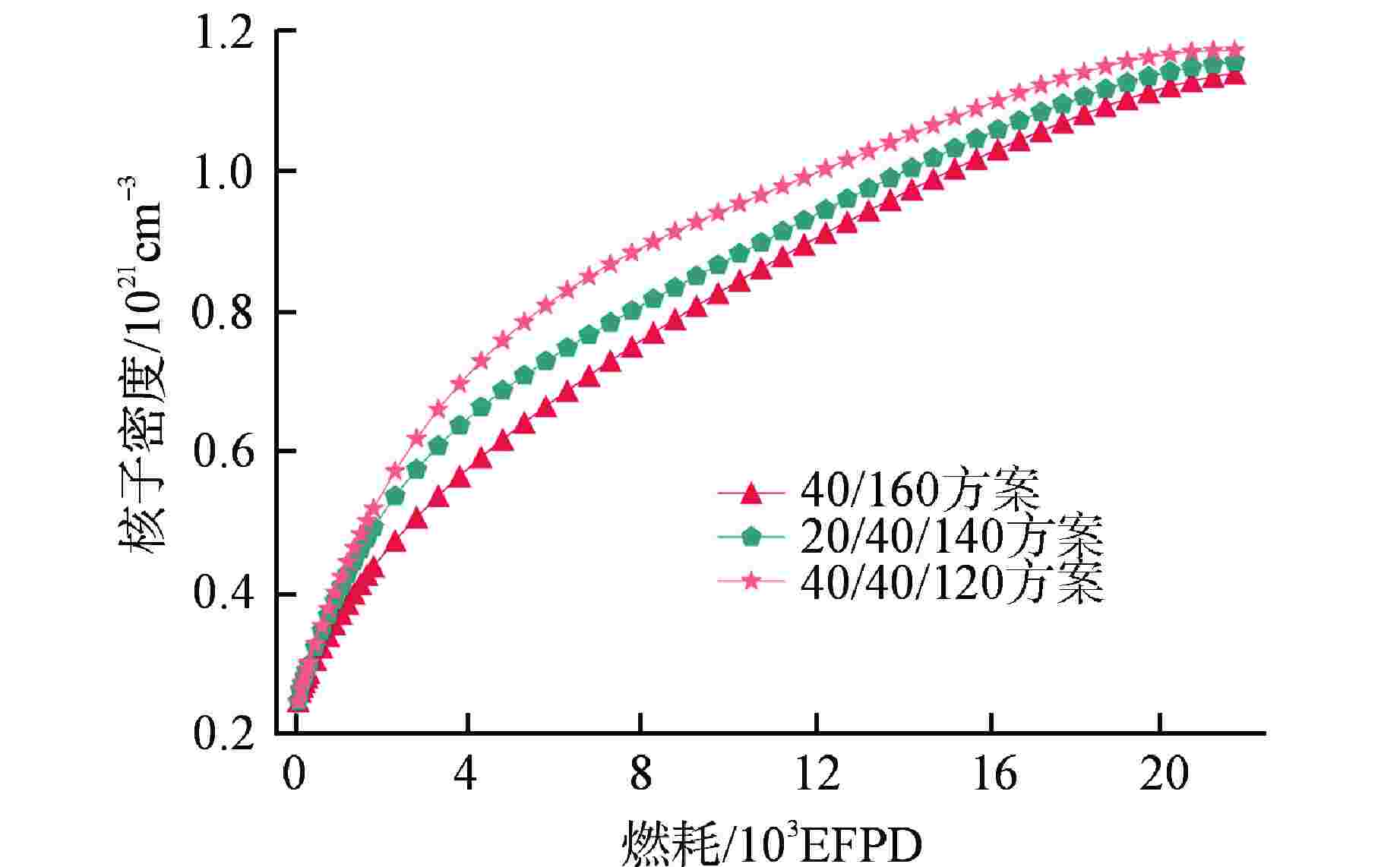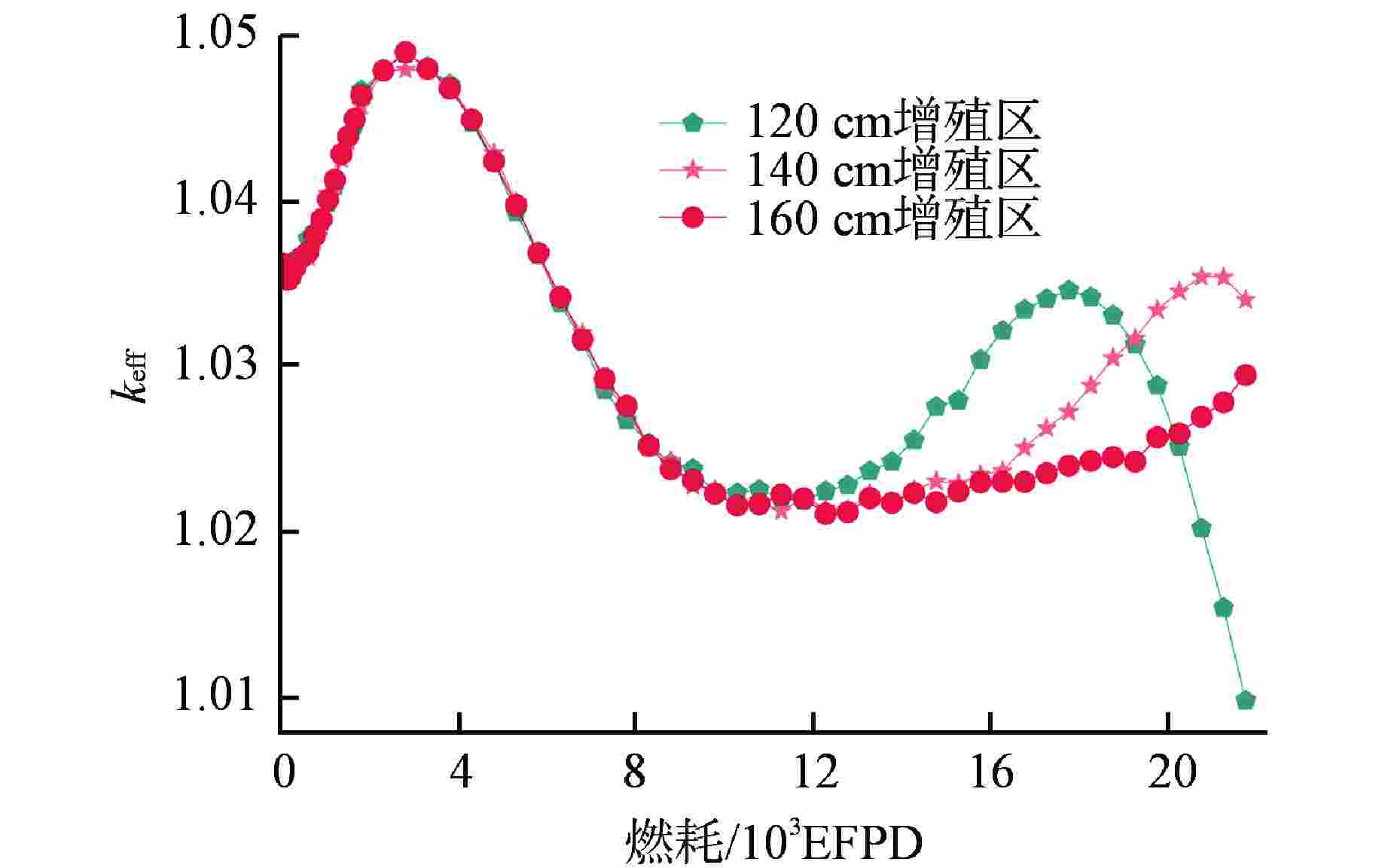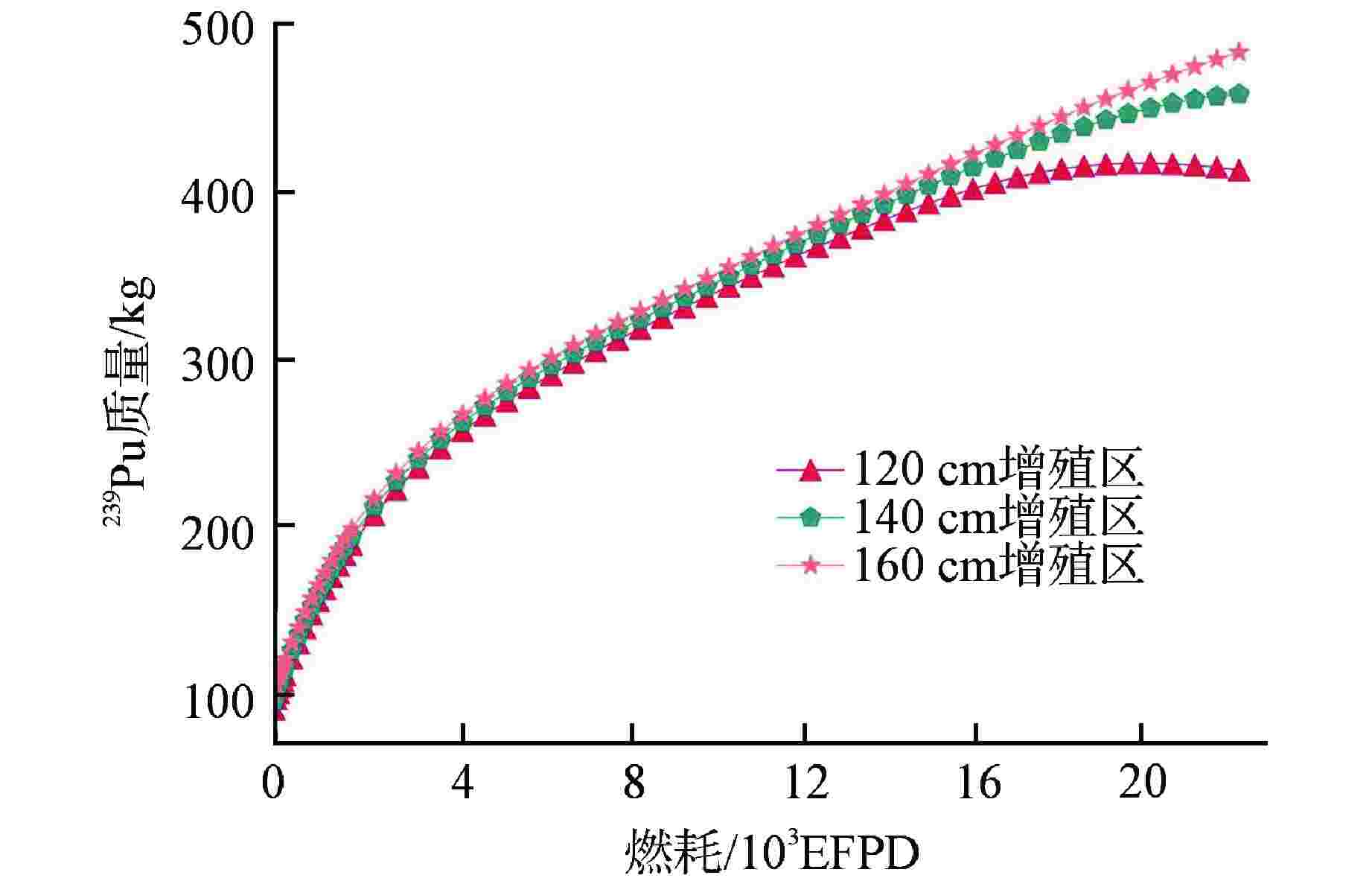Study on Reactivity Variation and Its Influencing Factors of Lead-cooled Traveling Wave Reactor
-
摘要: 铅冷行波堆具有安全性好、倒换料周期长、铀资源利用率高等突出优势,是先进核能系统的重点发展方向之一,实现反应性微小变化是铅冷行波堆堆芯方案设计的关键技术问题。本文以热功率700 MW、采用金属燃料的铅冷行波堆物理方案为研究对象,重点研究了堆芯点火区及增殖区设计参数变化对有效增殖因子(keff)的影响,分析了全寿期堆芯反应性的变化趋势。数值结果表明:点火区设计参数显著影响堆芯初始keff,点火区的易裂变核素装量越大,初始keff越大,通过调整点火区在堆芯轴向位置及其燃料富集度可有效降低反应性变化幅度;堆芯装载的可转换核素与易裂变核素之比越高,增殖产生的239Pu越多,整体增殖性能越好;增殖区越长,平衡态持续时间越长,堆芯寿期越长。本文研究结论可为铅冷行波堆堆芯物理方案设计及关键参数选择提供重要理论依据。
-
关键词:
- 铅冷行波堆 /
- 有效增殖因子(keff) /
- 点火区 /
- 增殖区
Abstract: Lead-cooled traveling wave reactor has outstanding advantages of good safety, long refueling and shuffling cycles, and high utilization rate of uranium resources. It is one of the key development directions of advanced nuclear energy system. Realizing the small change of reactivity is the key technical problem in the core scheme design of lead-cooled traveling wave reactor. Taking the physical scheme of lead-cooled traveling wave reactor with thermal power of 700MW and metal fuel as the research object, this paper focuses on the influence of the design parameters of core ignition zone and breeder zone on the effective multiplication factor (keff), and analyzes the change trend of core reactivity in the whole life. The numerical results show that ignition zone design parameters significantly affect the initial keff of the core. The larger the amount of fissile nuclides in the ignition zone, the larger the initial keff. The variation range of reactivity can be effectively reduced by adjusting the axial position of the ignition zone in the core and its fuel enrichment; The higher the ratio of convertible nuclides to fissile nuclides loaded in the core, the more 239Pu produced by breeding, and the better the overall breeding performance; The longer the breeder zone, the longer the duration of equilibrium state and the longer the core life. The conclusions of this paper can provide an important theoretical basis for the physical scheme design of lead-cooled traveling wave reactor core and the selection of key parameters. -
表 1 燃料组件设计参数
Table 1. Fuel Assembly Design Parameters
参数名 参数值 几何形状 正方形 冷却剂流道外径/mm 7.2 冷却剂流道内径/mm 6.2 流道中心距/mm 10.0 冷却剂流道排列 15×15 燃料组件横截面积/mm2 24649 燃料体积份额/% 54.1163 结构材料体积份额/% 14.5400 冷却剂体积份额/% 31.3437 燃料组件对边距/mm 154.0 燃料组件盒厚度/mm 2.0 表 2 点火区金属燃料成分
Table 2. Metal Fuel Composition in Ignition Zone
核素 质量分数/% 核素 质量分数/% 235U 3.3600 238U 80.6400 238Pu 0.1596 239Pu 2.8386 240Pu 1.5048 241Pu 0.9360 242Pu 0.5610 91Zr 10.0000 表 3 HT-9不锈钢成分
Table 3. HT-9 Stainless Steel Composition
元素 质量分数/% 元素 质量分数/% Fe 84.200 Mn 0.590 Cr 12.100 W 0.580 Ni 0.600 Si 0.390 Mo 0.920 V 0.310 Ti 0.002 C 0.171 O 0.016 表 4 增殖区金属燃料成分
Table 4. Metal Fuel Composition in Breeder Zone
核素 质量分数/% 核素 质量分数/% 235U 0.6029 240Pu 0.3311 236U 0.6608 241Pu 0.2060 238U 97.2323 242Pu 0.1235 237Np 0.0742 241Am 0.0014 238Pu 0.0351 243Am 0.0333 239Np 0.0566 242Cm 0.0011 239Pu 0.6247 244Cm 0.0176 表 5 组件材料参数
Table 5. Assembly Meterial Parameters
材料 体积份额/% 密度/(g·cm−3) 平均温度/K 质量分数/% 核燃料 54.12 14 1000 63.55 结构材料 14.54 7.37 1000 08.99 冷却剂 31.34 10.44 700 27.46 表 6 不同点火区长度堆芯寿期末238U和239Pu变化
Table 6. Variation of 238U and 239Pu at the End of Life of Core under Different Ignition Zone Lengths
点火区长度/cm 40 60 80 238U利用率/% 32.50 32.06 31.66 239Pu产生量/kg 370.3 353.2 337.6 239Pu产生率/% 479.3 373.7 301.9 表 7 不同235U富集度下堆芯寿期末238U和239Pu变化
Table 7. Variation of 238U and 239Pu at the End of Life of Core under Different 235U Enrichment
235U富集度/% 5 6 7 238U利用率/% 32.5 32.3 32.1 239Pu产生量/kg 370.3 368.6 367.7 239Pu产生率/% 479.3 477.2 476 表 8 不同点火区位置堆芯寿期末238U和239Pu变化
Table 8. Variation of 238U and 239Pu at the End of Life of Core under Different Ignition Zone Locations
方案 40/160 20/40/140 40/40/120 238U利用率/% 34.6 34.7 34.8 239Pu产生量/kg 354.3 360.6 367.4 239Pu产生率/% 358.6 365 371.8 表 9 不同增殖区长度堆芯寿期末238U和239Pu变化
Table 9. Variation of 238U and 239Pu at the End of Life of Core under Different Breeder Zone Lengths
增殖区长度/cm 120 140 160 238U利用率/% 38 34.7 31.7 239Pu产生量/kg 319.8 360.6 381.2 239Pu产生率/% 338.2 365 369.8 -
[1] HEJZLAR P. Traveling wave reactor (TWR®)[M]. GREENSPAN E. Encyclopedia of Nuclear Energy. Amsterdam: Elsevier, 2021: 643-656. [2] FEINBERG S M, KUNEGIN E P. Discussion comment[C]//Record of Proceedings Session B-10, International Conference on the Peaceful Uses for Atomic Energy. Geneva, Switzerland: United Nations, 1958: 447. [3] 郑美银,陈平,张大林,等. 钠冷驻波堆堆芯概念设计研究[J]. 核动力工程,2018, 39(S1): 79-83. [4] 严明宇,陈彬,冯琳娜,等. 行波堆堆芯设计初步研究[J]. 核动力工程,2015, 36(4): 32-36. [5] SEKIMOTO H, RYU K, YOSHIMURA Y. CANDLE: the new burnup strategy[J]. Nuclear Science and Engineering, 2001, 139(3): 306-317. doi: 10.13182/NSE01-01 [6] ELLIS T, PETROSKI R, HEJZLAR P, et al. Traveling-wave reactors: a truly sustainable and full-scale resource for global energy needs[C]//Proceedings of the International Congress on Advances in Nuclear Power Plants. San Diego, CA, USA, 2010. [7] SEKIMOTO H, NAGATA A. "CANDLE" burnup regime after LWR regime[J]. Progress in Nuclear Energy, 2008, 50(2-6): 109-113. doi: 10.1016/j.pnucene.2007.10.012 [8] WANG K, LI Z G, SHE D, el al. RMC – A Monte Carlo code for reactor core analysis[J]. Annals of Nuclear Energy, 2015, 82: 121-129. doi: 10.1016/j.anucene.2014.08.048 [9] SIENICKI J J, MOISSEYTSEV A, YANG W S, et al. Status report on the small secure transportable autonomous reactor (SSTAR)/lead-cooled fast reactor (LFR) and supporting research and development: ANL-GenIV-089[R]. Argonne: Argonne National Lab, 2008. [10] YU R, SEMENOV M. BFS-61 assemblies: critical experiments of mixed plutonium, depleted uranium, graphite and lead with different reflectors: NEA/NS/DOC(2006)[R]. Idaho: Idaho National Laboratory, 2013. [11] 孙伟. 行波堆物理分析方法及物理特性研究[D]. 北京: 清华大学, 2014. -





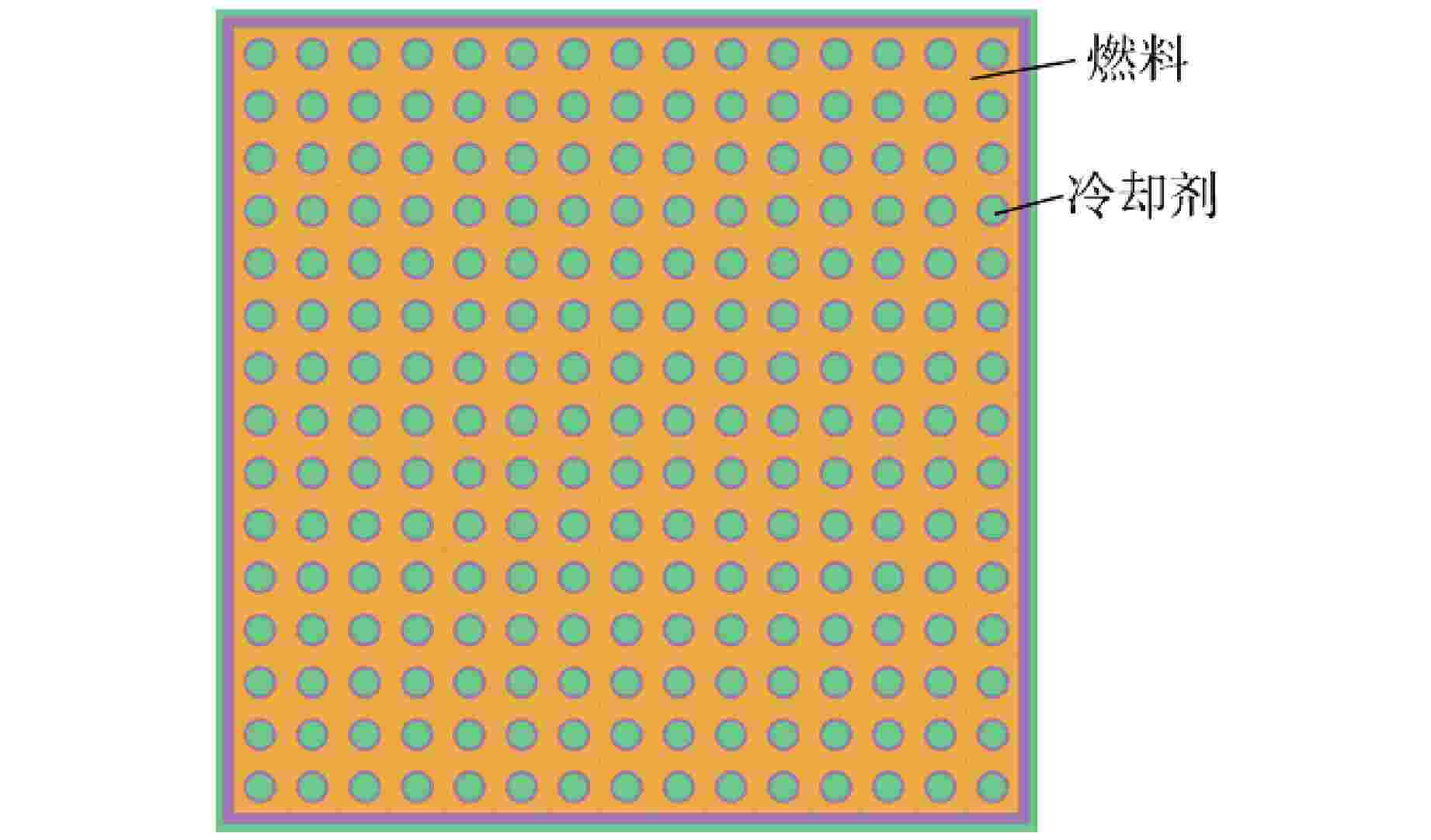
 下载:
下载:
